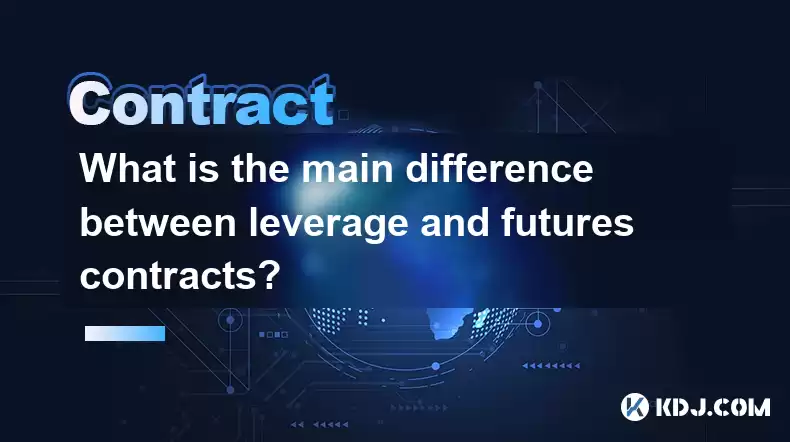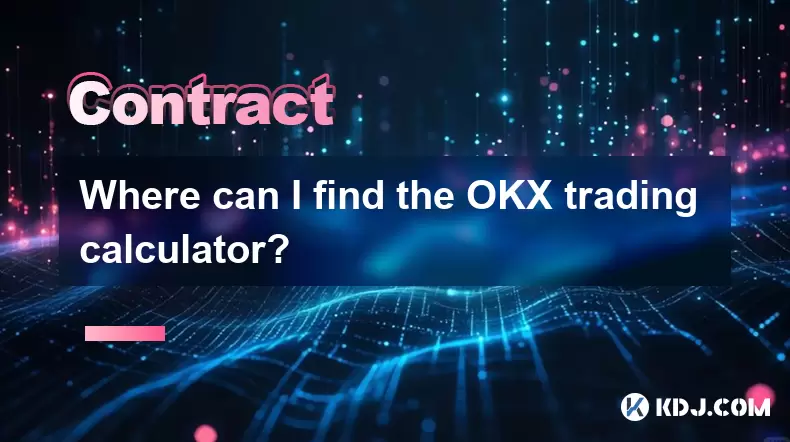-
 Bitcoin
Bitcoin $116700
0.24% -
 Ethereum
Ethereum $3973
4.34% -
 XRP
XRP $3.283
7.68% -
 Tether USDt
Tether USDt $1.000
0.01% -
 BNB
BNB $789.8
2.27% -
 Solana
Solana $176.2
3.31% -
 USDC
USDC $0.9999
0.00% -
 Dogecoin
Dogecoin $0.2238
5.14% -
 TRON
TRON $0.3389
-0.51% -
 Cardano
Cardano $0.7907
4.03% -
 Stellar
Stellar $0.4527
10.02% -
 Hyperliquid
Hyperliquid $41.07
4.27% -
 Sui
Sui $3.794
1.77% -
 Chainlink
Chainlink $19.49
10.40% -
 Bitcoin Cash
Bitcoin Cash $580.9
0.74% -
 Hedera
Hedera $0.2617
4.32% -
 Avalanche
Avalanche $23.41
3.67% -
 Ethena USDe
Ethena USDe $1.001
-0.03% -
 Litecoin
Litecoin $122.4
1.38% -
 Toncoin
Toncoin $3.364
1.49% -
 UNUS SED LEO
UNUS SED LEO $8.988
0.37% -
 Shiba Inu
Shiba Inu $0.00001295
2.82% -
 Uniswap
Uniswap $10.62
5.75% -
 Polkadot
Polkadot $3.922
4.46% -
 Dai
Dai $1.000
0.01% -
 Bitget Token
Bitget Token $4.494
2.15% -
 Monero
Monero $268.0
-1.30% -
 Cronos
Cronos $0.1523
3.68% -
 Pepe
Pepe $0.00001127
4.43% -
 Aave
Aave $285.4
4.85%
What is the main difference between leverage and futures contracts?
Leverage amplifies crypto trading exposure but increases risk, while futures contracts allow hedging or speculating on future prices with set terms.
Apr 07, 2025 at 01:00 am

Leverage and futures contracts are both financial tools used in the cryptocurrency market, but they serve different purposes and have distinct characteristics. Leverage allows traders to amplify their exposure to a cryptocurrency by borrowing funds to increase the size of their position. This can potentially lead to higher profits, but also higher losses. On the other hand, futures contracts are agreements to buy or sell a cryptocurrency at a predetermined price on a specific date in the future. They are used for hedging against price fluctuations or speculating on future price movements.
Leverage is often used in conjunction with futures contracts, but it is not a requirement. Traders can use leverage to increase their position size in a futures contract, but they can also trade futures without leverage. The main difference between the two is that leverage is a tool that can be applied to various types of trades, while futures contracts are a specific type of financial instrument.
Understanding Leverage
Leverage is a powerful tool that allows traders to control a larger position with a smaller amount of capital. It is expressed as a ratio, such as 10:1, which means that for every dollar of capital, the trader can control $10 worth of assets. Leverage is commonly used in cryptocurrency trading because the market is highly volatile, and traders can potentially make significant profits with a small initial investment.
However, leverage also comes with increased risk. If the market moves against the trader's position, the losses can be magnified. This is why it's important for traders to understand the risks associated with leverage and to use it responsibly. Many exchanges offer leverage through margin trading, where traders can borrow funds from the exchange to increase their position size.
Key Aspects of Futures Contracts
Futures contracts, on the other hand, are standardized agreements to buy or sell a specific amount of a cryptocurrency at a predetermined price on a future date. They are traded on futures exchanges, such as the Chicago Mercantile Exchange (CME) or the Binance Futures platform. Futures contracts are used by traders to hedge against price fluctuations or to speculate on future price movements.
One of the key features of futures contracts is that they allow traders to lock in a price for a future transaction. This can be beneficial for those who want to protect themselves against potential price drops or rises. Futures contracts also offer the flexibility to close out the position before the expiration date, allowing traders to realize profits or cut losses.
How Leverage is Used in Futures Trading
Leverage is often used in conjunction with futures contracts to amplify potential returns. When trading futures with leverage, traders can control a larger position than they would be able to with their own capital alone. For example, if a trader has $1,000 and uses 10:1 leverage, they can control a position worth $10,000.
However, using leverage in futures trading also increases the risk of significant losses. If the market moves against the trader's position, the losses can be magnified by the leverage ratio. This is why it's crucial for traders to use risk management strategies, such as setting stop-loss orders, to protect their capital.
Differences in Risk and Reward
The main difference between leverage and futures contracts in terms of risk and reward lies in their nature and application. Leverage amplifies both potential profits and losses, making it a high-risk, high-reward tool. Traders using leverage need to be aware of the potential for margin calls, where they may be required to deposit additional funds to maintain their position.
Futures contracts, on the other hand, offer a more structured approach to trading. While they can also be traded with leverage, the risk is somewhat mitigated by the fact that the contract has a predetermined expiration date and price. This allows traders to plan their trades more effectively and manage their risk accordingly. However, futures trading still carries significant risk, especially if the market moves against the trader's position.
Practical Applications in the Cryptocurrency Market
In the cryptocurrency market, both leverage and futures contracts are widely used by traders to capitalize on price movements. Leverage is commonly used in spot trading, where traders buy and sell cryptocurrencies directly, as well as in futures trading. For example, a trader might use leverage to increase their exposure to Bitcoin, hoping to profit from short-term price fluctuations.
Futures contracts are particularly popular in the cryptocurrency market because they allow traders to speculate on the future price of cryptocurrencies without actually owning them. This can be beneficial for those who want to hedge their existing cryptocurrency holdings or for those who want to take a position on the future price of a cryptocurrency without the need to hold the underlying asset.
Regulatory Considerations
Regulation plays a significant role in how leverage and futures contracts are used in the cryptocurrency market. In some jurisdictions, the use of leverage and futures trading is heavily regulated, while in others, it is more loosely controlled. For example, in the United States, the Commodity Futures Trading Commission (CFTC) oversees the trading of cryptocurrency futures, ensuring that exchanges comply with regulations to protect investors.
Traders need to be aware of the regulatory environment in their jurisdiction and how it may impact their ability to use leverage and trade futures contracts. Failure to comply with regulations can result in severe penalties and legal consequences. It's important for traders to conduct thorough research and consult with legal professionals to ensure they are operating within the bounds of the law.
Choosing Between Leverage and Futures Contracts
When deciding whether to use leverage or futures contracts, traders need to consider their trading goals, risk tolerance, and market conditions. Leverage can be a powerful tool for amplifying returns, but it also increases the risk of significant losses. Traders who are comfortable with higher risk and want to capitalize on short-term price movements may find leverage to be a suitable option.
Futures contracts, on the other hand, offer a more structured approach to trading and can be used for both hedging and speculation. They are particularly useful for traders who want to lock in a price for a future transaction or who want to take a position on the future price of a cryptocurrency without holding the underlying asset. Traders who prefer a more controlled risk environment may find futures contracts to be a better fit.
Strategies for Using Leverage and Futures Contracts
Traders can employ various strategies when using leverage and futures contracts in the cryptocurrency market. Here are some common approaches:
Hedging: Traders can use futures contracts to hedge their existing cryptocurrency holdings against potential price drops. For example, if a trader holds a significant amount of Bitcoin, they can enter into a futures contract to sell Bitcoin at a predetermined price, protecting their position from adverse price movements.
Speculation: Traders can use both leverage and futures contracts to speculate on the future price of cryptocurrencies. For example, a trader might use leverage to increase their exposure to Ethereum, betting that the price will rise in the short term. Alternatively, they might enter into a futures contract to buy Ethereum at a future date, anticipating a price increase.
Arbitrage: Traders can take advantage of price differences between different markets by using leverage and futures contracts. For example, if the price of Bitcoin is higher on one exchange than another, a trader can use leverage to buy Bitcoin on the lower-priced exchange and sell it on the higher-priced exchange, profiting from the price difference.
Scalping: This strategy involves making numerous small trades to capitalize on short-term price movements. Traders can use leverage to increase their position size and amplify their profits from these small trades. Futures contracts can also be used for scalping, allowing traders to enter and exit positions quickly.
Risks and Challenges
Both leverage and futures contracts come with their own set of risks and challenges. Leverage can lead to significant losses if the market moves against the trader's position, and traders need to be prepared to manage these risks effectively. This includes setting stop-loss orders, monitoring their positions closely, and being prepared to add more funds if a margin call occurs.
Futures contracts also carry risks, particularly if the market moves significantly before the contract's expiration date. Traders need to be aware of the potential for large price swings and the impact this can have on their positions. Additionally, futures contracts are subject to counterparty risk, where the other party in the contract may fail to fulfill their obligations.
The Role of Exchanges
Cryptocurrency exchanges play a crucial role in facilitating the use of leverage and futures contracts. Many exchanges offer margin trading, allowing traders to borrow funds to increase their position size. These exchanges typically have strict margin requirements and may issue margin calls if a trader's position moves against them.
Futures exchanges, such as the CME and Binance Futures, provide a platform for traders to enter into futures contracts. These exchanges ensure that the contracts are standardized and that the terms are clearly defined. They also provide mechanisms for traders to close out their positions before the expiration date, allowing for greater flexibility in managing their trades.
Impact on Market Dynamics
The use of leverage and futures contracts can have a significant impact on the dynamics of the cryptocurrency market. Leverage can amplify price movements, leading to increased volatility. When many traders use leverage to take similar positions, it can create a feedback loop that drives prices higher or lower, depending on the direction of the trades.
Futures contracts can also influence market dynamics by providing a mechanism for traders to hedge their positions and speculate on future price movements. The existence of futures markets can lead to increased liquidity and more efficient price discovery, as traders can take positions based on their expectations of future price movements.
Common Questions
Q: What is leverage in cryptocurrency trading?
A: Leverage in cryptocurrency trading allows traders to control a larger position with a smaller amount of capital. It is expressed as a ratio, such as 10:1, meaning that for every dollar of capital, the trader can control $10 worth of assets. Leverage amplifies both potential profits and losses, making it a high-risk, high-reward tool.
Q: How do futures contracts work in the cryptocurrency market?
A: Futures contracts in the cryptocurrency market are agreements to buy or sell a specific amount of a cryptocurrency at a predetermined price on a future date. They are traded on futures exchanges and can be used for hedging against price fluctuations or speculating on future price movements. Traders can close out their positions before the expiration date, allowing for flexibility in managing their trades.
Q: Can leverage be used with futures contracts?
A: Yes, leverage can be used with futures contracts to increase the size of the position. This allows traders to control a larger position than they would be able to with their own capital alone. However, using leverage with futures contracts also increases the risk of significant losses, so traders need to use risk management strategies to protect their capital.
Q: What are the risks associated with using leverage in cryptocurrency trading?
A: The main risk associated with using leverage in cryptocurrency trading is the potential for magnified losses. If the market moves against the trader's position, the losses can be amplified by the leverage ratio. Traders need to be prepared for margin calls, where they may be required to deposit additional funds to maintain their position. Effective risk management, such as setting stop-loss orders, is crucial when using leverage.
Q: How do regulatory considerations affect the use of leverage and futures contracts in the cryptocurrency market?
A: Regulatory considerations can significantly impact the use of leverage and futures contracts in the cryptocurrency market. In some jurisdictions, the use of leverage and futures trading is heavily regulated, while in others, it is more loosely controlled. Traders need to be aware of the regulatory environment in their jurisdiction and ensure they comply with all relevant regulations to avoid penalties and legal consequences.
Disclaimer:info@kdj.com
The information provided is not trading advice. kdj.com does not assume any responsibility for any investments made based on the information provided in this article. Cryptocurrencies are highly volatile and it is highly recommended that you invest with caution after thorough research!
If you believe that the content used on this website infringes your copyright, please contact us immediately (info@kdj.com) and we will delete it promptly.
- Punisher Coin: The Altcoin Ready to Punish Your Portfolio with Gains?
- 2025-08-08 22:50:16
- Mutuum Finance, Bitcoin Whales, and Binance: Decoding the Crypto Currents
- 2025-08-08 22:30:11
- Bitcoin, Crypto Market, Volatility: Riding the Rollercoaster in NYC Style
- 2025-08-08 22:50:16
- HTX Copy Trading Extravaganza: Rewards and Opportunities for Traders
- 2025-08-08 23:30:12
- SPX6900 Pumps & TOKEN6900 Presale: Month Growth Mania!
- 2025-08-08 23:30:12
- Dogwifhat, Beanie, and $800,000: A Meme Worth Millions?
- 2025-08-08 23:35:12
Related knowledge

What is the distinction between mark price and last price on KuCoin?
Aug 08,2025 at 01:58pm
Understanding the Basics of Price in Cryptocurrency TradingIn cryptocurrency exchanges like KuCoin, two key price indicators frequently appear on trad...

What are the specific maker and taker fees on KuCoin Futures?
Aug 08,2025 at 08:28am
Understanding Maker and Taker Fees on KuCoin FuturesWhen trading on KuCoin Futures, users encounter two primary types of fees: maker fees and taker fe...

What is the maximum leverage available on KuCoin Futures?
Aug 08,2025 at 10:21am
Understanding Leverage in KuCoin Futures TradingLeverage in KuCoin Futures allows traders to control a larger position size using a smaller amount of ...

What is the minimum deposit for OKX contracts?
Aug 08,2025 at 07:00am
Understanding OKX Contract Trading BasicsOKX is one of the leading cryptocurrency derivatives exchanges, offering a wide range of perpetual and future...

Where can I find the OKX trading calculator?
Aug 08,2025 at 07:49am
Understanding the OKX Trading Calculator FunctionalityThe OKX trading calculator is a powerful analytical tool designed to assist traders in estimatin...

What is copy trading for OKX perpetual contracts?
Aug 08,2025 at 10:42pm
Understanding Copy Trading in the Context of OKX Perpetual ContractsCopy trading is a feature offered by the OKX exchange that enables users to automa...

What is the distinction between mark price and last price on KuCoin?
Aug 08,2025 at 01:58pm
Understanding the Basics of Price in Cryptocurrency TradingIn cryptocurrency exchanges like KuCoin, two key price indicators frequently appear on trad...

What are the specific maker and taker fees on KuCoin Futures?
Aug 08,2025 at 08:28am
Understanding Maker and Taker Fees on KuCoin FuturesWhen trading on KuCoin Futures, users encounter two primary types of fees: maker fees and taker fe...

What is the maximum leverage available on KuCoin Futures?
Aug 08,2025 at 10:21am
Understanding Leverage in KuCoin Futures TradingLeverage in KuCoin Futures allows traders to control a larger position size using a smaller amount of ...

What is the minimum deposit for OKX contracts?
Aug 08,2025 at 07:00am
Understanding OKX Contract Trading BasicsOKX is one of the leading cryptocurrency derivatives exchanges, offering a wide range of perpetual and future...

Where can I find the OKX trading calculator?
Aug 08,2025 at 07:49am
Understanding the OKX Trading Calculator FunctionalityThe OKX trading calculator is a powerful analytical tool designed to assist traders in estimatin...

What is copy trading for OKX perpetual contracts?
Aug 08,2025 at 10:42pm
Understanding Copy Trading in the Context of OKX Perpetual ContractsCopy trading is a feature offered by the OKX exchange that enables users to automa...
See all articles

























































































